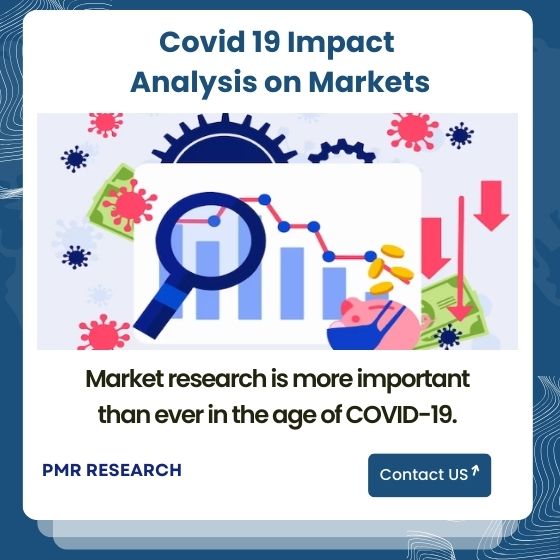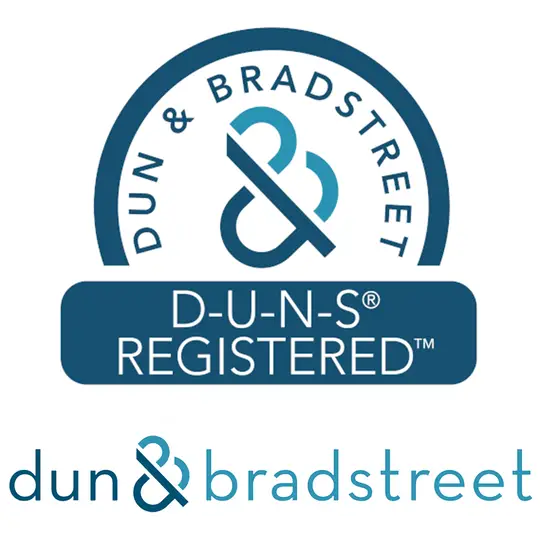
Industrial Robotics Market, By Product (Cartesian, Articulated, SCARA, and Cylindrical), By Application (Electrical & Electronics, Automotive, Chemical, Machinery, Metals, Food and Beverages, and Precision & optics) and Geography (NA, EU, APAC, and RoW) ? Analysis, Share, Trends, Size, & Forecast From 2017 ? 2028


Market Executive Summary
REPORT HIGHLIGHT
The industrial robotics market is estimated to represent a global market of USD 32.7 billion by 2017 with growth rate of 5.3%.
Market Dynamics
The global industrial robotics market traces its history from the early 1960s when the first large-scale application of robots was perfected for automation of automotive industry. Since then, it had a thriving journey by providing the manufacturing sector with programmable and flexible machines for complex tasks. The growth of the industrial robotics industry continues at an impressive place, majorly driven by rising labor charges across the globe. This would, in turn, have enforced companies to replace labor with machines. This growing demand for these products is justified by the recent statistics released by the International Federation of Robotics (IFR). The organization stated that the global sales of industrial robots recorded 387,000 units in 2017, up 31% compared to the previous year statistics. Further, between 2012 and 2017, the average sales of robotic products have increased at 19% CAGR.
Furthermore, the development of collaborative machines, the launch of application-specific machines coupled with growing penetration in SMEs is the key factors augmenting the global industry. The lucrative opportunity for the growth of this market lies with small and medium-sized enterprises (SMEs) (manufacturing units), which are economical in this globalized world. Other factors such as growing non-automotive applications and associated benefits such as reduction in manufacturing costs and increased productivity are some potential factors stoking the industry growth. However, lack of technical skills coupled with high cost hampers the market growth to some extent.
Product Takeaway
The robotics market revolves around the four key market parameters; namely products, applications, functions, and geography. Based on products, the industry is bifurcated as Cartesian (gantry), Articulated, SCARA, Cylindrical, and others. This classification of robots is done on the basis of their mechanical structure. Among its various types, articulated, SCARA, and Cartesian robots are majorly used by industries. Articulated robots continue to hold a major share of the industrial robots market in 2017.
Application Takeaway
Depending upon applications, the industry is segmented as Electrical & Electronics, Automotive, Chemical, Machinery, Metals, Food and Beverages, Precision and optics and others. Among which, automotive and electrical & electronics sector will continue to capture the highest share, i.e. more than 55% in an anticipated year. In a recent trend, collaborative robotics is more frequently used in the automotive industry. Integration of robots with production processes helps manufacturer in improving productivity, minimizing overheads and offers a high degree of flexibility as compared to the outcome of manual labor that consequently propels this application market.
Regional Takeaway
Regionally, with revenue of more than USD 25 billion in 2017, the Asia Pacific region is considered to be the strongest individual market. Japan, South Korea and China are projected to record significant revenue. Robot industries in Asia Pacific countries such as Korea, Taiwan and China are supported by their governments through programs addressing tax incentives, R&D funding, loans, and investment in skills. On another side, developed regions such as Europe and North America accounted for the significant revenue share. Rising demand for automation in industrial production coupled with the increasing standard of living will push the industry demand upward in these regions.
Key Vendor Takeaway
Some of the major competing players in this market are Kuka AG, ABB Ltd., Yaskawa, Kawasaki Robotics, Adept Technologies, Yamaha Robotics, Toshiba Machine, and Panasonic Welding Solutions Ltd. Companies who are investing in industrial robots are realizing substantial financial benefits, which, in turn, led to surge in installation of robots in contemporary manufacturing plants.
The market size and forecast for each segment and sub-segments has been considered as below:
Historical Year ? 2017 ? 2021
Base Year ? 2021
Estimated Year ? 2022
Projected Year ? 2028
TARGET AUDIENCE
Traders, Distributors, and Suppliers
Manufacturers
Government and Regional Agencies and Research Organizations
Consultants
Distributors
SCOPE OF THE REPORT
The scope of this report covers the market by its major segments, which include as follows:
MARKET, BY PRODUCT
Cartesian (Gantry) Robot
Articulated Robot
SCARA Robot
Cylindrical Robot
Others
MARKET, BY APPLICATION
Electrical & Electronics
Automotive
Chemical
Machinery
Metals
Food and Beverages
Precision and optics
Others
MARKET, BY REGION
North America
U.S.
Canada
Europe
Germany
France
Rest of Europe
Asia Pacific
India
China
Rest of APAC
Rest of the World
Middle East and Africa
Latin America
Table of Contents
TABLE OF CONTENT
1. INDUSTRIAL ROBOTICS MARKET OVERVIEW
1.1. Study Scope
1.2. Assumption and Methodology
2. EXECUTIVE SUMMARY
2.1. Key Market Facts
2.2. Geographical Scenario
2.3. Companies in the Market
3. INDUSTRIAL ROBOTICS KEY MARKET TRENDS
3.1. Market Drivers
3.1.1. Impact Analysis of Market Drivers
3.2. Market Restraints
3.2.1. Impact Analysis of Market Restraints
3.3. Market Opportunities
3.4. Market Future Trends
4. INDUSTRIAL ROBOTICS INDUSTRY STUDY
4.1. Porter?s Analysis
4.2. Market Attractiveness Analysis
4.3. Regulatory Framework Analysis
5. INDUSTRIAL ROBOTICS MARKET LANDSCAPE
5.1. Market Share Analysis
6. INDUSTRIAL ROBOTICS MARKET ? BY PRODUCT
6.1. Overview
6.2. Cartesian (Gantry) Robot
6.2.1. Overview
6.2.2. Market Analysis, Forecast, and Y-O-Y Growth Rate, 2017 ? 2028, (US$ Billion)
6.3. Articulated Robot
6.3.1. Overview
6.3.2. Market Analysis, Forecast, and Y-O-Y Growth Rate, 2017 ? 2028, (US$ Billion)
6.4. SCARA Robot
6.4.1. Overview
6.4.2. Market Analysis, Forecast, and Y-O-Y Growth Rate, 2017 ? 2028, (US$ Billion)
6.5. Cylindrical Robot
6.5.1. Overview
6.5.2. Market Analysis, Forecast, and Y-O-Y Growth Rate, 2017 ? 2028, (US$ Billion)
6.6. Others
6.6.1. Overview
6.6.2. Market Analysis, Forecast, and Y-O-Y Growth Rate, 2017 ? 2028, (US$ Billion)
7. INDUSTRIAL ROBOTICS MARKET ? BY APPLICATION
7.1. Overview
7.2. Electrical & Electronics
7.2.1. Overview
7.2.2. Market Analysis, Forecast, and Y-O-Y Growth Rate, 2017 ? 2028, (US$ Billion)
7.3. Automotive
7.3.1. Overview
7.3.2. Market Analysis, Forecast, and Y-O-Y Growth Rate, 2017 ? 2028, (US$ Billion)
7.4. Chemical
7.4.1. Overview
7.4.2. Market Analysis, Forecast, and Y-O-Y Growth Rate, 2017 ? 2028, (US$ Billion)
7.5. Machinery
7.5.1. Overview
7.5.2. Market Analysis, Forecast, and Y-O-Y Growth Rate, 2017 ? 2028, (US$ Billion)
7.6. Metals
7.6.1. Overview
7.6.2. Market Analysis, Forecast, and Y-O-Y Growth Rate, 2017 ? 2028, (US$ Billion)
7.7. Food and Beverages
7.7.1. Overview
7.7.2. Market Analysis, Forecast, and Y-O-Y Growth Rate, 2017 ? 2028, (US$ Billion)
7.8. Precision and optics
7.8.1. Overview
7.8.2. Market Analysis, Forecast, and Y-O-Y Growth Rate, 2017 ? 2028, (US$ Billion)
7.9. Others
7.9.1. Overview
7.9.2. Market Analysis, Forecast, and Y-O-Y Growth Rate, 2017 ? 2028, (US$ Billion)
8. INDUSTRIAL ROBOTICS MARKET? BY GEOGRAPHY
8.1. Introduction
8.2. North America
8.2.1. Overview
8.2.2. Market Analysis, Forecast, and Y-O-Y Growth Rate, 2017 ? 2028, (US$ Billion)
8.2.3. U.S.
8.2.3.1. Overview
8.2.3.2. Market Analysis, Forecast, and Y-O-Y Growth Rate, 2017 ? 2028, (US$ Billion)
8.2.4. Canada
8.2.4.1. Overview
8.2.4.2. Market Analysis, Forecast, and Y-O-Y Growth Rate, 2017 ? 2028, (US$ Billion)
8.3. Europe
8.3.1. Overview
8.3.2. Market Analysis, Forecast, and Y-O-Y Growth Rate, 2017 ? 2028, (US$ Billion)
8.3.3. France
8.3.3.1. Overview
8.3.3.2. Market Analysis, Forecast, and Y-O-Y Growth Rate, 2017 ? 2028, (US$ Billion)
8.3.4. Germany
8.3.4.1. Overview
8.3.4.2. Market Analysis, Forecast, and Y-O-Y Growth Rate, 2017 ? 2028, (US$ Billion)
8.3.5. Rest of Europe
8.3.5.1. Overview
8.3.5.2. Market Analysis, Forecast, and Y-O-Y Growth Rate, 2017 ? 2028, (US$ Billion)
8.4. Asia Pacific (APAC)
8.4.1. Overview
8.4.2. Market Analysis, Forecast, and Y-O-Y Growth Rate, 2017 ? 2028, (US$ Billion)
8.4.3. China
8.4.3.1. Overview
8.4.3.2. Market Analysis, Forecast, and Y-O-Y Growth Rate, 2017 ? 2028, (US$ Billion)
8.4.4. India
8.4.4.1. Overview
8.4.4.2. Market Analysis, Forecast, and Y-O-Y Growth Rate, 2017 ? 2028, (US$ Billion)
8.4.5. Rest of APAC
8.4.5.1. Overview
8.4.5.2. Market Analysis, Forecast, and Y-O-Y Growth Rate, 2017 ? 2028, (US$ Billion)
8.5. Rest of the World
8.5.1. Overview
8.5.2. Market Analysis, Forecast, and Y-O-Y Growth Rate, 2017 ? 2028, (US$ Billion)
8.5.3. Latin America
8.5.3.1. Overview
8.5.3.2. Market Analysis, Forecast, and Y-O-Y Growth Rate, 2017 ? 2028, (US$ Billion)
8.5.4. Middle East and Africa
8.5.4.1. Overview
8.5.4.2. Market Analysis, Forecast, and Y-O-Y Growth Rate, 2017 ? 2028, (US$ Billion)
9. KEY VENDOR ANALYSIS
9.1. Kuka AG
9.1.1. Company Overview
9.1.2. SWOT Analysis
9.1.3. Key Developments
9.2. ABB Ltd.
9.2.1. Company Overview
9.2.2. SWOT Analysis
9.2.3. Key Developments
9.3. Yaskawa
9.3.1. Company Overview
9.3.2. SWOT Analysis
9.3.3. Key Developments
9.4. Kawasaki Robotics
9.4.1. Company Overview
9.4.2. SWOT Analysis
9.4.3. Key Developments
9.5. Adept Technologies
9.5.1. Company Overview
9.5.2. SWOT Analysis
9.5.3. Key Developments
9.6. Yamaha Robotics
9.6.1. Company Overview
9.6.2. SWOT Analysis
9.6.3. Key Developments
9.7. Toshiba Machine
9.7.1. Company Overview
9.7.2. SWOT Analysis
9.7.3. Key Developments
9.8. Panasonic Welding Solutions Ltd.
9.8.1. Company Overview
9.8.2. SWOT Analysis
9.8.3. Key Developments
*Client can request additional company profiling as per specific requirements
10. 360 DEGREE ANALYSTVIEW
11. APPENDIX
11.1. Research Methodology
11.2. Abbreviations
11.3. Disclaimer
11.4. Contact Us
List of Figures
List of Figures
Figure 1 Research Methodology
Figure 2 Research Process Flow Chart
Figure 3 Comparative Analysis, by Geography, 2017-2028 (Value %)
Figure 4 Regulatory Framework Analysis
Figure 5 Industrial Robotics Market, by Product, 2017 ? 2028 (USD Billion)
Figure 6 Industrial Robotics Market, by Application, 2017 ? 2028 (USD Billion)
Figure 7 Industrial Robotics Market, by Geography, 2017 ? 2028 (USD Billion)

This report focuses on:
► Intelligent insights to take informed business decisions.
► Qualitative and quantitative analysis of the market.
► Market size and forecasts from 2024 to 2030.
► Opportunities for expansion and in-depth market analysis.
► Segmentation and regional revenue forecasts.
► Analysis of the market share and competitive landscape.
► Strategic recommendations for future growth.
You'll also receive:
► A comprehensive market research report in PDF or PPT formats.
► Access to our analysts to learn more about the report and get answers to your specific business questions.
► The option to customize the report to meet your specific needs, such as adding more countries or regions or developing abusiness case to launch a new product.


